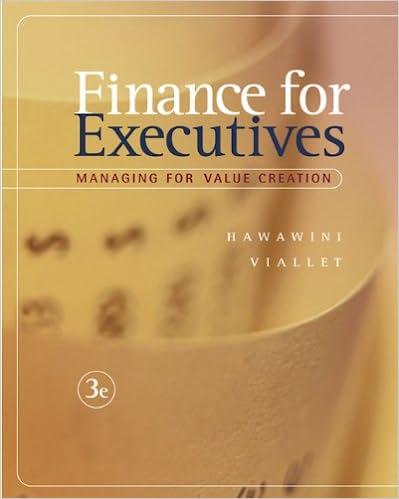Question
Ewing Natural Gas is a large energy company with headquarters in Dallas, Texas. The company offers a wide variety of energy products and has annual
Ewing Natural Gas is a large energy company with headquarters in Dallas, Texas. The company offers a wide variety of energy products and has annual revenues of approximately $50 billion. Because of the diverse nature of the company, its Manager for Project Development, Cliff Erland, is under continual pressure to manage project proposals from the functional areas of the company. At any point in time, there might be dozens of projects at various stages requiring a wide variety of capital expenditures, promising widely varying future revenue streams, and containing varying degrees of risk. Cliff has a difficult balancing act. The companys CEO, J.R. Bayer, is very concerned about keeping capital expenditures within a fixed budget and managing risk. The heads of the companys functional areas are less worried about budgets and risks; they are most concerned that their pet projects are approved (human factors).
Cliff is currently about to meet with all parties involved to discuss project proposals for the next three years. He has proposals from the various functional areas for projects they would like to undertake. Each of these is accompanied by a schedule of capital expenditures over the next three years and a financial analysis of the expected revenue streams. These lead to an NPV for each proposal. (See the attached data file) J.R. Bayer has stated that the total of capital expenditures for the approved projects can be no more than $10 billion and that no more than $4 billion should be spent in any single year. Unfortunately, the capital expenditures for the potential list of projects is well over $10 billion, so Cliff knows that some of these very promising projects will not be approved. Each functional area wants as many of its projects to be approved as possible, but it certainly does not want to be shut out altogether.
Questions
1. Deterministic case: assuming there is no uncertainty to consider, find the best set of projects to invest for Cliff.
2. Risk evaluation: Now all of the capital expenditures in the data file shall be replaced with triangular distributions. The values in the data file should be the most likely values, and each minimum and maximum for the distribution should be, respectively, 15% below and 30% above the most likely value. The NPVs should also be modelled with triangular distributions, using the values in the data file as most likely values. However, their minimum and maximum values should be, respectively, 20% below and 15% above the most likely value. Given the set of projects selected in question 1, simulate the probability distribution of total NPV, and the probability that each budget is satisfied. For example, the results should include the fraction of iterations where total capital expenditures for the three-year period are no greater than $10 billion.
3. Recommend a set of projects to invest for Cliff under the uncertainties considered in question 2. The objective is to maximize the mean total NPV. There shall be a probability constraint on each budget: the probability that capital expenditures are within the budget should be at least 0.95. There will also be the usual (non-probabilistic) constraints that each functional area should have at least one project approved. Try to find the best set of projects and explain the solution approach you take in the report.
| |||||||||||||||||||||||||||||||||||||||||||||||||||||||||||||||||||||||||||||||||||||||||||||||||||||||||||||||||||||||||||||||||||||||||||||||||||||||||||||||||||||||||||||||||||||||||||||||||||||||||||||||||||||||||||||||||||||||||||||||||||||||||||||||||||||||||||||||||||||||||||||||||||||||||||||||||||||||||||||||||||||||||||||||||||||||||||||||||||||||||||||||||||||||||||||||||||||||||||||||||||||||||||||||||||||||||||||||||||||||||||||||||||||||||||||||||||||||||||||||||||||||||||||||||||||||||||||||||||||||||||||||||||||||||||||||||||||||||||||||||||||||||||||||||||||||||||||||||||||||||||||||||||||||||||||||||||||||||||||||||||||||||||||||||||||||||||||||||||||||||||||||||||||||||||||||||||||||||||||||||||||||||||||||||||||||||||||||||||||||||||||||||||||||||||||||||||||||||||||||||||||||||||||||||||||||||||||||||||||||||||||||||||||||||||||||||||||||||||||||||||||||||||||||||||||||||||||
Step by Step Solution
There are 3 Steps involved in it
Step: 1

Get Instant Access to Expert-Tailored Solutions
See step-by-step solutions with expert insights and AI powered tools for academic success
Step: 2

Step: 3

Ace Your Homework with AI
Get the answers you need in no time with our AI-driven, step-by-step assistance
Get Started


